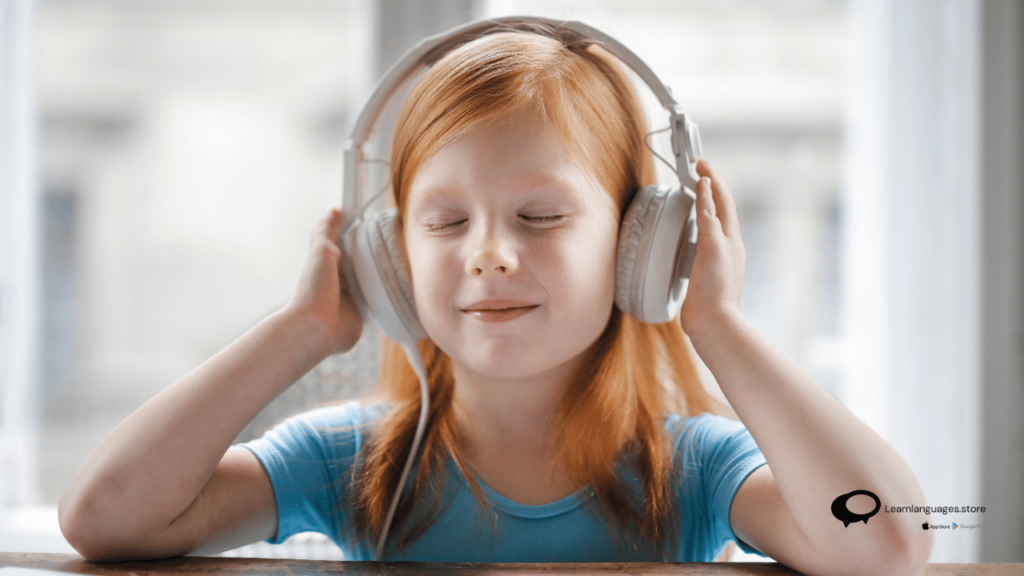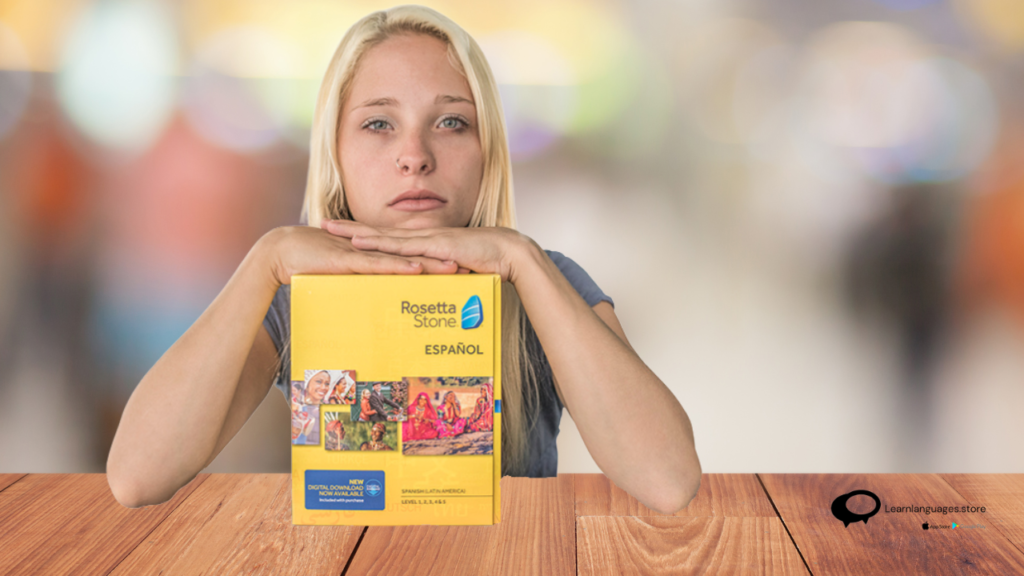Does Rosetta Stone work for learning languages?
Does Rosetta Stone work for learning languages?
Does Rosetta Stone work? -If you’ve looked for a language app, you’ve probably come across Rosetta Stone. This well-known website promises to be your means of learning a new language and assisting you with real-life communication in an easy and practical manner.
So, what exactly is Rosetta Stone?

Is Rosetta Stone beneficial to language learners? Is it worthwhile to invest your time, money, and effort? What languages are you capable of learning? How efficient is this language learning app?
If you want to use this software to learn a foreign language, you may want to know if it actually works.
I have all of the answers to your inquiries. This page covers all you need to know about features, how it works, cost, benefits, downsides, and ratings to help you make the best selection.
In this honest 2022 Rosetta Stone review, we’ll find out everything.
I attempted to be as specific as possible. As a result, our Rosetta Stone review is thorough. If you’re short on time, use the table of contents to go straight to the areas that interest you.
So, let’s get this party started!
How the Rosetta Stone app works

Language learning has never been easier than with Rosetta Stone. And yet, it operates otherwise than comparable language applications. This is due to the fact that it is founded on the organization’s exclusive training methodology.
Rosetta Stone, Inc. created this language-learning programme for use on personal computers. IXL Learning acquired it in 2021, making it part of their family.
The headquarters of Rosetta Stone, Inc. are located in Arlington, Virginia (USA). In addition to a few locations in the United States, the company maintains offices in six foreign nations.
It’s not quite as gamey as Duolingo or Memrise, but there are still plenty of opportunities to practise what you’re learning. There are 25 different languages available, and the instruction is more traditional.
It is accessible on the Web, iOS, and Android, as was predicted. Simply click “Download,” “Register,” “Subscribe,” and “Begin Started” to get going.
An Overview of the Rosetta Stone’s Past
In the beginning, there was Allen Stoltzfus, who created the Rosetta Stone language-learning software. Traditional methods of learning Russian were difficult for him, and that’s what sparked his bright idea. Then, in the late 1980s, he set out to develop an efficient language-learning programme.
But he had to wait until 1992, when he formed Rosetta Stone, because of the lack of available technology at the time. As such, it is one of the pioneering services of its kind and has become a household brand name in the field of language-learning apps.
It was the first of its kind and has built a solid reputation in the industry over the years. And that’s why it grew in popularity, content, language support, and financial success. The result was the enormous growth of the firm.
For Whom is Rosetta Stone Intended?

There’s nothing like the excitement of learning a new language. There’s a tonne of suspense and satisfaction in reaching the finish of it.
Most individuals find it challenging to learn a new language despite the many benefits of doing so. Additionally, you are not alone if you are experiencing the same thing.
Because of this problem, several companies have created language apps, software, or SaaS. The tool is useful for a wide range of language-related tasks, including translation, pronunciation, vocabulary expansion, and grammatical analysis. The Rosetta Stone software is one such option.
You may learn vocabulary and grammar using this app. And it accomplishes this without the need for any intermediary languages, such as written, spoken, or visual ones.
Anyone interested in learning a new language on their own can use Rosetta Stone. You learn new vocabulary, expressions, and even complete sentences. As a bonus, your communication and listening skills will flourish.
The practise and learning benefits of work broken down into small, manageable chunks may be maximised by using elements of both visual games and real-world scenarios. Furthermore, you won’t be bored to tears. Instead, it’s interesting, amusing, easygoing, and adaptable.
Whether you’re a complete novice or already have some experience with the language, Rosetta Stone can accommodate you.
Rosetta Stone teaches what languages?

Rosetta Stone now provides instruction in 23 languages for English speakers and 2 more languages for individuals who do not yet know English.
Arabic, French, German, Italian, Mandarin Chinese, Japanese, Korean, Russian, and Hindi are only few of the widely spoken languages in the world. Moreover, Vietnamese, Dutch, Farsi (Persian), and Turkish are all accessible.
Is it your goal to master only one speech variety? There are two varieties of Spanish you may choose from: Spain and Latin America. Similarly, Canadian and Australian English or Brazilian Portuguese.
More uncommon languages are available on this site than you may think. Greek, Hebrew, Irish, Polish, Latin, Swedish, and Tagalog are only a few examples (Filipino).
Just how does it function, exactly?
It starts out by only communicating with you in the language you want to learn. Never does it instruct in a familiar tongue.
No translation is ever provided either. Instead, it uses photos and audio/text that has not been translated to lead the way. So you study everything—including the manual—in your target language while you acquire the skills to read, write, speak, and listen in it.
The tone or queries asked are dependent on your prior interactions with such words or inquiries. As a result, you’ll have no trouble recalling anything, and you may be assured that your research is supported by the surrounding context.
A milestone exercise, a simulated discussion of the unit’s subject matter, is included in each unit as a means of recapping the material presented in the associated classes.
The software teaches you by having you perform exercises that often begin with logical reasoning. Not only are MCQs optimised for mobile devices, but most activities also use visual cues and require you to match the right response pattern.
The exercises in Rosetta Stone are written in the target language, while the program’s grammar lessons are presented in a simplified form. As a result, it gives you the attention you deserve while focusing on the specifics you require to improve your language abilities to the next level.

Main Selling Point and Methodology of Rosetta Stone
Rosetta Stone was created by those who placed a premium on language immersion.
These businesspeople were able to learn languages in a natural environment while studying abroad. They planned to build a duplicate as close to home as feasible for people who couldn’t get there.
Using a method called Dynamic Immersion, Rosetta Stone simulates how people naturally pick up new languages. Many new students will benefit much from understanding this topic.
You won’t be able to utilise your everyday vocabulary with this approach. Therefore, you are solely dependent on linguistic and visual clues for comprehension. And to draw from one’s own knowledge of the target language’s grammar, vocabulary, and culture.
This program’s technique and idea may appeal to those who subscribe to the “learn a language like a kid” school of thought. This is how our first language, or mother tongue, is passed down from generation to generation.
Rosetta Stone also has another distinguishing quality. For word analysis, it makes use of the computer’s own speech recognition software, called TrueAccent.
The company’s speaking component enriches its philosophy of immersive learning. By applying a time limit and a sense of urgency, it forces the user to commit previously learned material to memory.
Key Characteristics
You may learn a variety of languages using Rosetta Stone. All the way from Arabic and Persian to Japanese and French. It offers a respectable selection of courses and studies, with translations available in 25 languages covering most major languages.
- You may learn new words, sentence structures, and basic phrases using Rosetta Stone’s online and mobile language programmes.
- The programme is very easy to use and needs very little written instructions. You are free to skip forward if a lesson seems too basic, or to go through it in order.
- You may also see which courses you have completed and which you still need to finish. And a dashboard showing how you did on each metric.
- Rosetta Stone stands distinct from the competition because of its live instruction. After completing a software tutorial, “Live Tutoring” allows you to book a 25-minute video chat with the trainer.
- Instructors are kind, observant, and well-versed in their fields. The language teachers on this site are all highly qualified professionals.
- As a result, this programme makes extensive use of the gradual learning approach.
- The methods used in the training, such as memory and visual cues, are straightforward and stress-free. That’s why things are moving so slowly; there are more obstacles to overcome in order to make the process really organic.
- Deductive reasoning is used to initially understand the rudimentary nouns and verbs of a language. More complex verb tenses and plurals (such as “he ran,” “she ran,” and “they ran”) are introduced later, but the language as a whole remains straightforward.
- There is a lot of leeway throughout the course to determine how you want to approach the material.
- In each lesson, for instance, a core session comes first, followed by modules like speaking, reading, grammar, vocabulary, pronunciation, listening, and review.
- Activities may be chosen at any time and are easily accessed. In fact, you had the option to go back and forth between the activities. It’s simple to modify to your own preferences.
Levels
There are either 12 or 20 lessons for each language on the Rosetta Stone. Each lesson has a unique emphasis on language and vocabulary acquisition. Details are provided in the following:
- Within Units 1-4, students are introduced to fundamental concepts, vocabulary, and grammar. Greetings, presenting oneself, going shopping, answering some basic questions, and rudimentary listening and reading comprehension are all examples.
- Using what they’ve learned in the first four units as a foundation, students in units five through eight will be able to successfully navigate their environments. Activities such as spontaneous conversation, going somewhere, ordering food, following instructions, expressing oneself clearly in writing, going to work, going on vacation, etc. are included.
- The material covered in Units 9-12 is a continuation of the work covered in Units 1-8, expanding on the vocabulary and speaking abilities students acquired in those earlier lessons. It includes things like thoughts, hobbies, events, routines, jobs, health, schooling, etc.
- Building on what they’ve learned in Units 1 through 12, students can deepen their grasp of the language in Units 13 through 16. Issues related to wellness, emigrating, point of view, the wheel, work, play, travel, and more are discussed.
- Units 17–20 build on the foundation of communication skills developed in Units 1–16 and further students’ proficiency in the target language. Topics include crisis situations, politics, pop culture, family life, local traditions, holidays, values, beliefs, the economy, and more.
Rosetta Stone: The Pros and Cons
The benefits and drawbacks of Rosetta Stone are similar to those of any other language programme or software.

There are several benefits to using Rosetta Stone.
The advantages of this method of teaching a foreign language are laid forth here.
The design is appealing and engaging.

The user interface of the app is attractive and well-designed. Setting up microphones and doing sound checks with or without an external microphone, for example, is straightforward and successful.
No matter the language you learn, each course is fundamentally the same. The integration of web SaaS and mobile apps, as well as vice versa, simplifies everything.
The designs are user-friendly and simple to utilise. The dashboard also includes all of the necessary information to help you understand where you are and what has to be done next.
In a nutshell, the UI and UX Rosetta Stone are consistent, relaxing, and predictable.
The immersion approach works well.

Language acquisition requires you to speak and think in your own language.
Most of us are afraid of making mistakes in front of others who are already proficient. This might give the impression of illiteracy in the language. Making such blunders is the greatest way to learn proper usage, yet many people are still afraid.
The documentary on Rosetta Stone does an excellent job of breaking people out of that habit. As a result, the immersion technique benefits language students.
The self-developed language learning approach improves your ability to study and retain knowledge and vocabulary. This is because they were compelled to memorise it with no extra terminology.
It places a strong emphasis on visuals and texts to help students learn contextual grammar, and associative memory is enhanced. This improves the efficiency of the learning process.
It focuses on informal learning. As a result, you will find it simpler to construct a topic and converse rather than focusing on structure or language and depending more on speech pattern.
While it is not the same as chatting with a native speaker, it encourages you to remember and replicate certain sentence patterns and phrases. This enhances your capacity to participate in a meaningful dialogue.
Adaptable and easy

It allows you to prioritise those aspects of the phrase you wish to emphasise.
It also allows you to select the type of vocabulary (work, food, hobby, travel, etc.). As a result, it is an excellent choice for people who want to study the language for specialised objectives.
Rosetta Stone has a section with additional information and games. Some of these can be played by yourself. Others, on the other hand, need you to collaborate with another student or a native speaker.
This programme, like many other popular language applications, allows users to practise at their leisure. You may learn anywhere and whenever you want, from the classes you left to wherever you choose.
Rosetta Stone’s Drawbacks
There are certain logical benefits to using the Rosetta Stone approach. However, there are a number of negatives to consider before delving too deeply into them.
Is Rosetta Stone reliable?
It is not a substitute for regular classes.

Rosetta Stone is an excellent resource for learning vocabulary, gender, plurals, and fundamental verb conjugations. However, it is not ideal for learning complicated grammar, nuance, or cultural background.
The immersion approach has certain distinct advantages. However, most new learners struggle to grasp and get context since they are unfamiliar with the language at the outset.
TruAccent Speech Recognition tests your memory and assesses your pronounciation. While technology advances, it is still no match for the human voice, accent, and style. Getting input from a real person is far superior.
Of course, seeing or hearing something makes it much easier to recognise and identify it. However, it takes a lot of practise to repeat it with a time constraint.
Rosetta Stone is not intended for advanced students.

They tailored the material and training structure to beginners. Despite the intention to offer classes at intermediate and higher levels, this is not the case.
They focused on the fundamentals, such as vocabulary and memory-based repetitions. As a result, it is not appropriate for intermediate or advanced students. However, expanding the topic beyond the elementary level can help.
Fluency, let alone advanced levels, is unfathomable. If you utilise programmes like Rosetta Stone, you’ll never get close to B2 or C1. Even B1 and A2 appear challenging.
This flaw exists in almost all online language programmes, thus it isn’t unique to this one.
Levels 1–5 are not the same as A1–B2 in the CEFR-based German Goethe, French DELF, Italian CILS, Portuguese CAPLE, and Spanish DELE examinations.
The quality of the units, modules, and courses varies and falls short of expectations. It is not at all like the CEFR levels. In the end, you may just know a few key words, phrases, and sentences.
No cultural background or honorific

In a cultural environment, the programme loses. It appears to dismiss the diversity of culture across the languages it teaches and is a little boring.
If you study honorific languages such as Hindi, Korean, Mandarin, and Japanese. Then it falls short of expectations.
This is due to the fact that it does not distinguish between the necessity for a formal and casual manner of speaking in oriental languages.
It also employs the same pattern in all languages. It renders it obsolete for individuals studying many languages.
Repetitive, outmoded, and tedious

Rosetta Stone is uninteresting in comparison to newer language programmes that emphasise diversity, participation, and vibrant activities. Instead, learners should receive awards, points, and bonuses to keep them engaged with the programme.
There is no aptitude exam. So, regardless of your background, you may start from scratch or mix the themes you choose at random.
Lessons might be monotonous at times. The forms and questions all appear to be the same, with little differences. It’s like déjà vu all over again.
This quickly bores the learning process. And this has a detrimental impact on our drive to continue learning and remembering.
It is pricey.
The hefty price tag is not justified with old and ineffective apps like this. Rosetta Stone is a costly language study programme on the market.
They may have spent a lot of money on research and cutting-edge technologies for their defence. However, when the outcomes are poor, the expense is not justified.
Their subscription fee has just decreased. However, it is still on the expensive side and not worth it.
What is the price of Rosetta Stone?

Rosetta Stone used to only sell boxed software that required CD installation on your computer. Even now, their products are available on CD (or a box with a certificate for a digital download).
On Amazon, for example, they sell a bonus pack bundle of a single language for Spanish, French, German, and Latin for about $209.
Their current focus is on selling online memberships that can last a few months, a year, or a lifetime. Their online subscriptions are substantially cheaper. In addition, they created a subscription-based mobile app.
The following plans were available at the time of writing this Rosetta Stone review:
- Three months for $35.97 @ $11.99 per month for one language.
- 12-month subscription: $95.88 @ $7.99 per month for one language.
- $179 for a lifetime subscription (All 25 languages)
The quarterly and annual plans are rather pricey for only one language. A quarterly plan costs $35.97, while an annual plan costs $95.88.
Rosetta Stone Unlimited Lifetime Access is reasonably priced. You may get unlimited lifetime access to all 25 languages for $179.
They provide a free three-day trial that you may use before purchasing the complete product. Then, if you buy it and are still unhappy, you can request a return under the 30-day money-back guarantee.
Is it worthwhile?

So, now that you know how much the programme costs, how it works, and what I think about it, let’s get into my final judgement. Should you use Rosetta Stone to learn a new language?
Rosetta Stone is a time-tested, well-rounded, and technically adept language-learning programme. It is appropriate for beginners who require a foundation for their language study through core vocabulary and grammar.
While immersion is excellent, if you’ve never studied a language before, it may take some trial and error to find out where to start. There is also no placement test if you have a background.
The majority of the classes were geared for inexperienced students, which is good. However, if you want to achieve true fluency and advanced level, you need look into other types of schooling.
For instance, live offline or online classes with an instructor, podcasts, apps, books, audio lessons such as the Pimsleur technique, and so on. In the best-case scenario, Rosetta Stone can serve as a supplement or a tool for laying a fundamental foundation.
Because of their expertise and experience, most users have both negative and positive viewpoints.
According to common belief, Rosetta Stone’s comprehensive method to learning, while beneficial, is not for everyone. And this may not be the greatest method to begin your language learning adventure.
If it incorporates some new information and methods. This is in addition to changes in cultural perspectives and responding to the demands of each language, such as tone or speaking style. It has the potential to be a far superior language instruction software. For best experience and rosetta stone to work for you get our language grammar course at Learnlanguages.store
Rosetta Stone, in a nutshell, delivers more fundamental information by going into simpler grammar, vocabulary, dialogues, and conjugations. It also assesses your speaking skills using voice recognition and a live teacher option.
However, it might not be the ideal match for your learning style (if you have one).
If you have the means and patience to use it as a trial-and-error method, it is worth a go. But keep your expectations in check!

My Rosetta Stone Review: Below Average 4.2/5 Rosetta Stone Review
Rosetta Stone used to have a substantial market share and popularity in the digital language learning sector.
They possessed the first mover advantage, cash, and everything else needed to make it a success. Nonetheless, it fell short of meeting the demand for time. It appears to be the same as it was 10-15 years ago.
The lack of creativity and advancement is a major letdown. Furthermore, the lack of placement examinations, advanced courses, additional variants, and current and fresh lessons is a major disappointment!
Instead, the company’s main concentration is on sales and marketing, which is not a negative thing. Priority should be given to making the site suitable for 2022 language learners.
Learn Languages Store
Vashi,
Email: services@learnlanguages.store










